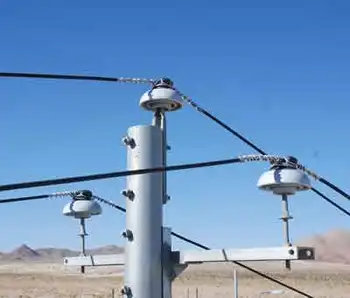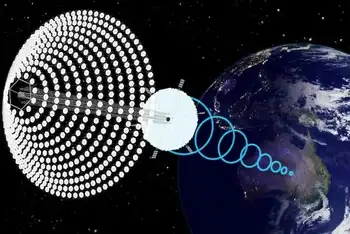How to “oil-proof” Canada’s mass transit
These price rises have been at a pace reminiscent of three years ago. Between Oct. 1, 2007, and April 15, 2008, both the NYMEX and Brent prices rose by 42 per cent, to just over $110. Whether the subsequent increases to above $140 in July, 2008, pushed the world economy into recession is still being debated. Whether the pattern of 2008 is being repeated in 2011 deserves more discussion.
If oil prices are on the same trajectory as that of 2008, we can expect a peaking in mid-2011 followed by an economic recession and a steep fall in oil prices. This is Jeff Rubin’s view, set out here in Economy Lab on March 13. He argued that a price rise can’t be prevented by a boost in supply by Saudi Arabia — or anyone else — because the Saudis can’t do it.
A contrary view is that of Donald Luskin writing in the Wall Street Journal on March 29. He claimed that Saudi Arabia will keep prices down by bridging any supply shortfalls. Even if it doesn’t, he continued, “the U.S. economy is today well-positioned to absorb an oil spike.” This, he suggested, is because:
1 U.S oil consumption is still 9 per cent below its 2005 peak
2 oil is now being used more efficiently than in 2008
3 economies in early stages of recovery are less vulnerable to oil shocks and
4 there is now a collective will to increase domestic oil production in the U.S.
I’m inclined to agree with Jeff Rubin. Oil prices will rise – perhaps higher and with a later peak than in 2008 for some of the reasons given by Donald Luskin – and then fall quite steeply as we again enter an oil-price-induced recession. The International Energy Agency shares the concern about effects on the economy. Its executive director said in Kuwait on April 17 that current high oil prices are a threat to growth and economic recovery. Two days earlier, Goldman Sachs had said the rising price of gasoline in the U.S. could undermine consumer spending and slow an already labouring economy.
If Mr. Rubin is right, weÂ’re effectively using the blunt tool of economic recession to reduce oil consumption in the face of supply constraints. Most oil is used for transportation, particularly in North America. In earlier posts I suggested that electricity is the best replacement for oil products as transportation fuels, especially when the electric motors are being powered from the grid while vehicles are in motion, as for trolley buses, streetcars and electric trains.
We should be moving as quickly as possible into electric traction. The way to get the most for each dollar invested in this transition would be to convert diesel bus routes to electric trolley bus routes. Conversion of a two-way route costs about $5-million per kilometre, including overhead wires, substations, and vehicles. Thus, for the $8-billion that the Ontario government through Metrolinx is to spend to add a 25-kilometre streetcar line in Toronto, 1,600 kilometres of roadway used by buses could be electrified, about 80 per cent of the total length of such roadway.
If the busiest routes were converted, this would mean that almost 100 per cent of transit trips in Toronto would be electrified, instead of the present 50 per cent the share carried by streetcars and subways. TorontoÂ’s transit system would be effectively proofed against oil crises. Some bus electrification of this kind would be worthwhile in all of CanadaÂ’s communities with a population of 100,000 or more, and in many smaller ones. European experience suggests that bus electrification can pay for itself over time.
Bus electrification would be particularly important in Eastern Canada, which is especially vulnerable to convulsions in oil markets because more than 90 per cent of the oil consumed there comes from or via another country. Moreover, unlike almost every other part of the developed world, there is no access to a strategic petroleum reserve.
Even with a massive program of bus electrification, most road transportation would not be electrified. How some road freight might benefit from powering while in motion was touched on in my last post. Doing this for car travel, which comprises about three quarters of the motorized movement of people in Canada, would be a larger challenge.
The kind of solution for personal transportation that I find increasingly appealing is often known as Personal Rapid Transit. PRT has been mooted for decades. Its time may be coming. You can get a sense of PRT in the short Swedish video Bubbles and Beams. In a later post, IÂ’ll set out PRTÂ’s prospects and challenges as we enter an era of oil scarcity and energy constraints.
Related News

Biden Imposes Higher Tariffs on Chinese Electric Cars and Solar Cells
WASHINGTON - In a significant move aimed at bolstering domestic industries and addressing trade imbalances, the Biden administration has announced higher tariffs on Chinese-made electric cars and solar cells. This decision marks a strategic shift in U.S. trade policy, reflecting concerns over competition, intellectual property rights, and national security implications.
Tariffs on Electric Cars
The imposition of tariffs on Chinese electric cars comes amidst growing competition in the global electric vehicle (EV) market. U.S. automakers and policymakers have raised concerns about unfair trade practices, subsidies, and market access barriers faced by American EV manufacturers in China. The tariffs aim to…





